Frederick Carl Frieseke (1874-1939)
Get a Frieseke Certificate of Authenticity for your painting (COA) for your Frieseke drawing.
For all your Frieseke artworks you need a Certificate of Authenticity (COA) in order to sell, to insure or to donate for a tax deduction.
Getting a Frieseke Certificate of Authenticity (COA) is easy. Just send us photos and dimensions and tell us what you know about the origin or history of your Frieseke painting or drawing.
If you want to sell your Frieseke painting or drawing use our selling services. We offer Frieseke selling help, selling advice, private treaty sales and full brokerage.
We have been authenticating Frieseke and issuing certificates of authenticity since 2002. We are recognized Frieseke experts and Frieseke certified appraisers. We issue COAs and appraisals for all Frieseke artworks.
Our Frieseke paintings and drawings authentications are accepted and respected worldwide.
Each COA is backed by in-depth research and analysis authentication reports.
The Frieseke certificates of authenticity we issue are based on solid, reliable and fully referenced art investigations, authentication research, analytical work and forensic studies.
We are available to examine your Frieseke painting or drawing anywhere in the world.
You will generally receive your certificates of authenticity and authentication report within two weeks. Some complicated cases with difficult to research Frieseke paintings or drawings take longer.
Our clients include Frieseke collectors, investors, tax authorities, insurance adjusters, appraisers, valuers, auctioneers, Federal agencies and many law firms.
We perform Frederick Carl Frieseke art authentication. appraisal, certificates of authenticity (COA), analysis, research, scientific tests, full art authentications. We will help you sell your Frederick Carl Frieseke or we will sell it for you.
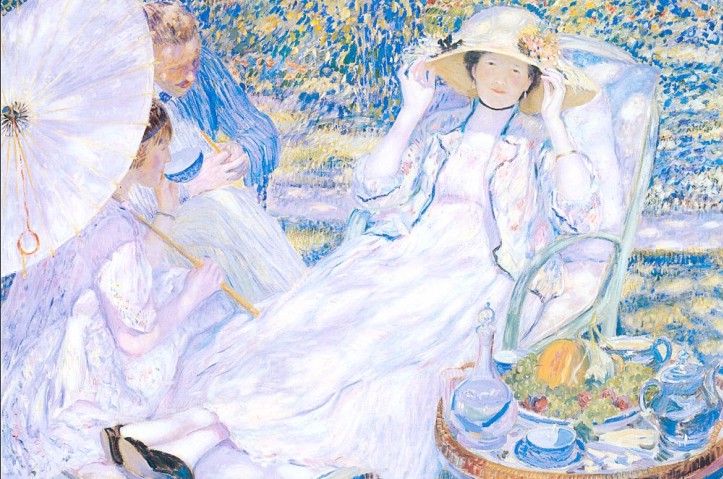

Frederick Carl Frieseke was an American Impressionist painter born in Owosso, Michigan. He was the son of a brick manufacturer and lost his mother when he was only six years old. He spent much of his childhood working in his Uncle’s grocery store, and after high school studied for one year at the Chicago Art Institute. Frieseke moved to New York in 1895 to study at the Art Students’ League and in 1898, moved to Paris to study under James McNeill Whistler at the Academie Julian.


During Frieske’s early years in Paris, much of his time was spent working on commissions for Rodman Wanamaker. Wanamaker had also commissioned him to paint murals on the side of his New York City store, as well as for the Shelbourne Hotel in Atlantic City. Art historians credit Wanamaker’s constant commissions as being the sole reason that Frieseke was able to devote himself to painting. In 1905, Frieseke married and the following year moved to Giverny where he lived next store to Claude Monet. Many of Frieseke’s paintings were set in his garden and the house that he rented in Giverny, and he and his family spent many summers there until 1919.
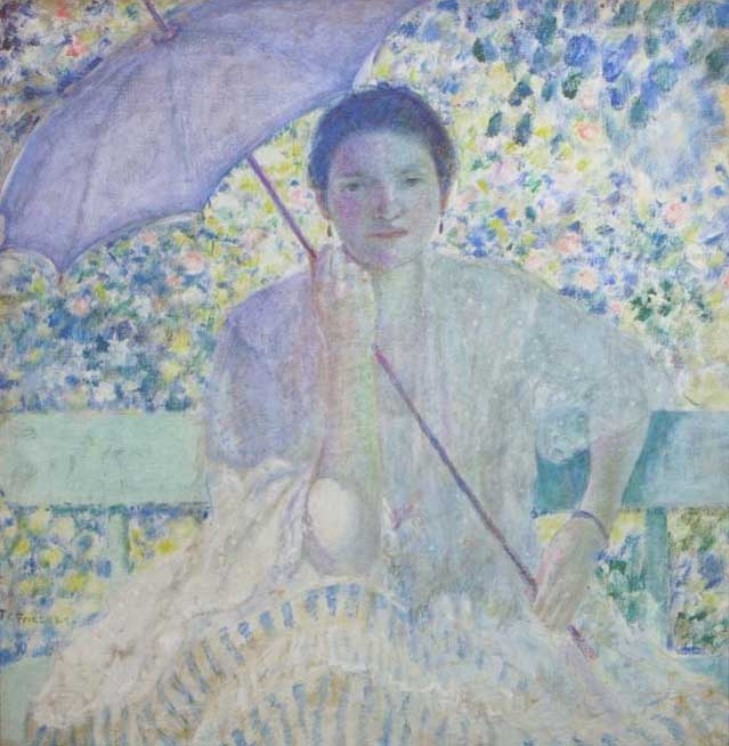


In generally, Frieseke mostly painted scenes of women seated outdoors in sunny gardens or in their bedrooms. Occasionally he would paint a landscape or still life, and found distaste in current artistic styles of the day.
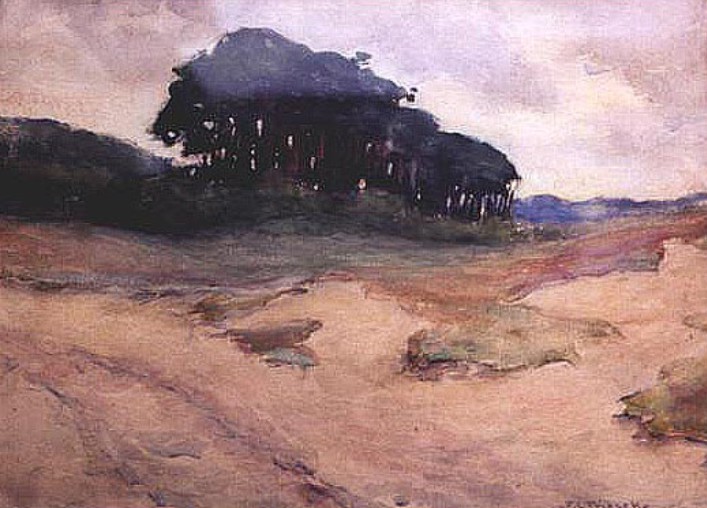
He was quoted as saying that he only found inspiration from the Impressionists in the work of Renoir, and mostly kept to himself in his later years, painting scenes of his wife and daughter.


Though he occasionally made trips back to the United States, Frieseke preferred to live in France because he felt that he was freer. He bought a home in Normandy to stay away from the art scene, and felt that it was easier to live in the country. He won many honors during his lifetime, most notably for his painting “Torn Lingerie” which won two gold medals at the Chicago Art Institute. Despite the fact that he was fairly successful, interest in Frieseke’s work began to decline after World War I. He slowly began to see diminishing sales and negative reviews from art critics. This was in response to changing tastes as the art world became more infused with Surrealism and Cubism. Thus, Frieseke moved away from Impressionism and more towards Realism.
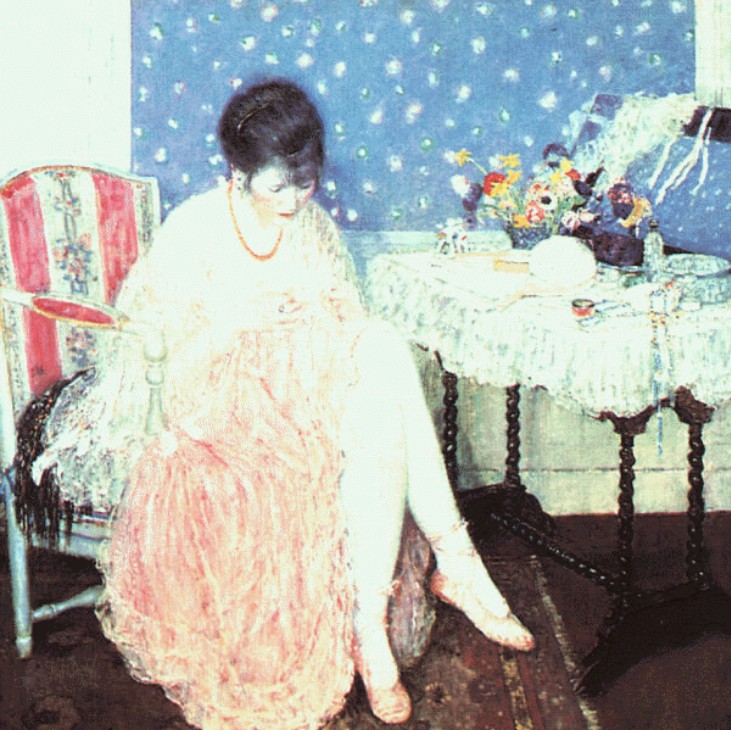
Despite the fact that some of his critics called him overly conservative, Frieseke made pains to be as unconventional as possible. Frieseke painted what he liked, and not necessarily what was popular at the time. In an ironic twist, Frieseke’s nudes, which were never well received with the American public, are now considered among his best work.
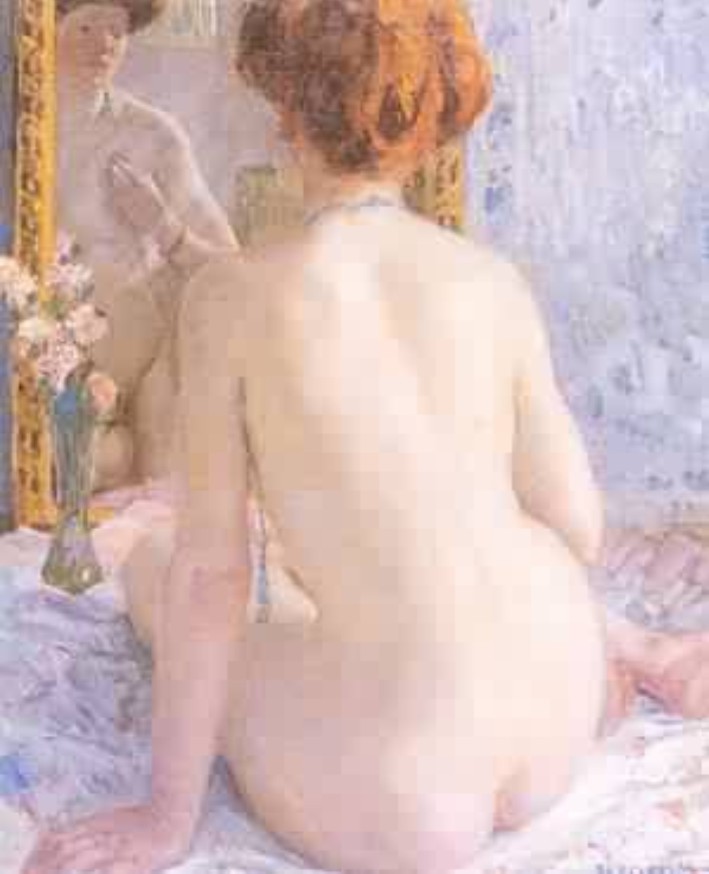

In another strange twist, it is said that Frieseke’s wife often edited his paintings if she felt it was necessary. Since he would often use his own home as his setting for his composition, it is said that his wife would remove objects from bureau tops or tables if she did not want them in the composition.
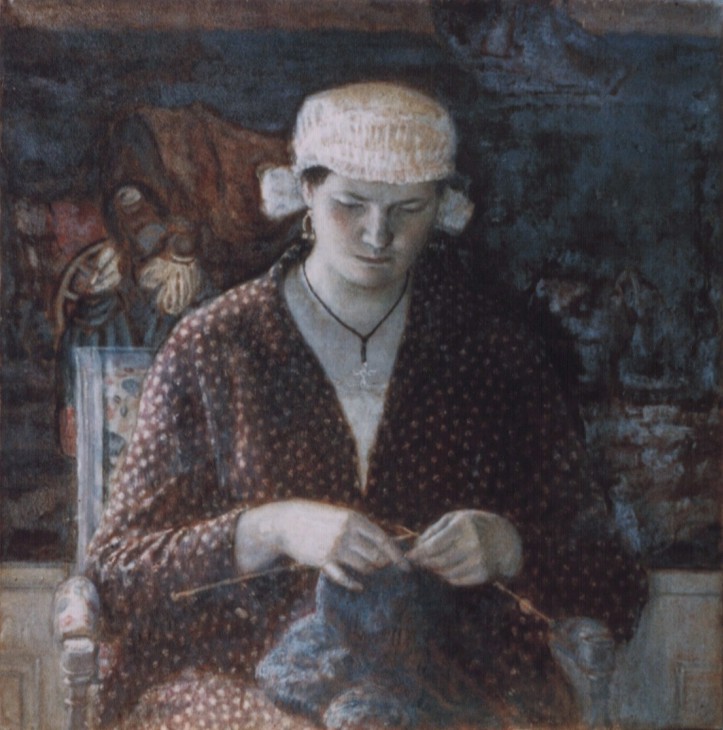

Freiseke died in 1939 in Normandy, and today his works are housed in public and private collections all over The United States and Europe. Frieseke’s paintings have regained some amount of popularity in recent years, and frequently are featured at auctions fetching high prices. Still wondering about an American or French Impressionist style painting in your family estate? Contact us…it could be by Frederick Carl Frieseke.
Reviews
1,217 global ratings
5 Star
4 Star
3 Star
2 Star
1 Star
Your evaluation is very important to us. Thank you.
